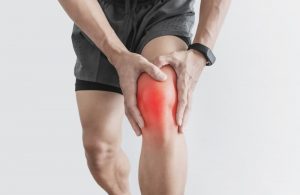Posted on Sunday, May 1st, 2022 at 9:57 pm
If you are experiencing pain every day, life can seem impossible. You may have tried various treatment methods without getting the results you need. You should not have to live with constant pain.
The recent opioid epidemic in the United States has emphasized the need for alternative pain management options. Each day, an average of 136 people in the U.S. die from an opioid overdose. Each person and each situation is different. While opioids can be useful in some treatment situations, they can also pose a serious risk.
What Is Pain?
 Physical pain can be classified into two main types. These are generally defined by how long the pain persists in the body. Acute pain is usually sudden and feels like a sharp pain sensation. An example of this is a sports injury, such as a broken ankle. Acute pain typically lasts less than three months.
Physical pain can be classified into two main types. These are generally defined by how long the pain persists in the body. Acute pain is usually sudden and feels like a sharp pain sensation. An example of this is a sports injury, such as a broken ankle. Acute pain typically lasts less than three months.
Acute pain generally goes away on its own once the associated injury has healed. However, acute pain can sometimes become chronic pain. This occurs when the pain remains even after the body has healed from the original injury.
Pain that lasts for more than three months is called chronic pain. This type of pain can linger for years and can have detrimental effects on a person’s quality of life. An example of this is arthritis in a knee or other joint. Another can be back and spine injuries such as failed back syndrome.
Living with any type of pain on a regular basis can be frustrating and wearing. This is especially true in cases where various treatment methods have been tried unsuccessfully.
Non-Medication Pain Management Alternatives
Pain can be managed in a variety of ways. Using ice, rest, elevation, and compression may be helpful for acute pain management while the body is healing. For managing lingering pain, you may benefit from considering these types of alternatives to medication:
- Yoga and tai chi – These are physical movement practices that promote well-being. They usually focus on holding physical postures, performing breathing techniques, and incorporating elements of meditation. These practices are gentle in nature and can be adapted for nearly any degree of flexibility and physical mobility.
- Massage therapy – A massage therapist manipulates a person’s soft tissues, such as muscles, while they are lying down or seated. Massages can be relaxing and may help to relieve tension and tightness in the body.
- Meditation and mindfulness – This generally involves a quiet setting, a comfortable seated or prone posture, and a specific focus of attention. The attention could be on feeling the sensation of breathing or on a specific word or phrase. Meditation is associated with increased calmness and relaxation.
- Acupuncture – This technique uses thin needles to stimulate certain points on the body. Acupuncture is a part of traditional Chinese medicine and has been around for thousands of years. While needles can seem intimidating, acupuncture usually does not cause any pain.
- Relaxation techniques – These can help to reduce stress in the body and the mind, resulting in reduced heart rate, lower blood pressure, and slower breathing. Relaxation is promoted by various methods, such as breathing exercises, guided visualization, and progressively tensing and relaxing different muscles in the body.
- Spinal manipulation – This is generally performed by a chiropractor, as spinal manipulation is often a part of chiropractic care. The practitioner typically uses their hands to apply a specific amount of force directly to the spine.
- Dietary supplements – Our bodies may benefit from consuming some substances we may not be getting in our diets, such as natural herbs, vitamins, minerals, fish oil, and probiotics. These are typically in a tablet or capsule form and taken regularly. There are many types, brands, sources, and dosages available. It’s important to let all your healthcare providers know about any supplements you take. Certain supplements may interact badly with medicines or specific medical conditions.
- Lifestyle changes – These can involve adding or removing certain habits from your daily life. For example, you may consider beginning an exercise regimen, drinking more water each day, or getting more sleep each night. You may also consider reducing or eliminating certain habits, such as smoking, eating sweets, or drinking coffee.

It’s critical to speak with your doctor before you begin any pain management plan to discuss what may be right for your condition.
How We Can Help
If you are unable to work because of a medical condition such as chronic pain, you may be eligible for benefits under your long-term disability insurance policy. We realize that this can be a stressful time just dealing with the pain you’re experiencing. When you hire a long-term disability insurance lawyer, you won’t have to navigate the process of getting benefits on your own.
Call us today at (267) 419-7888 to discuss your options with a Capitan Law long term disability lawyer. You can also reach us through our contact form online, and we will be in touch as soon as possible. Capitan Law represents individuals like you throughout the United States. Our previous satisfied clients are the reason we do what we do. Call us now.